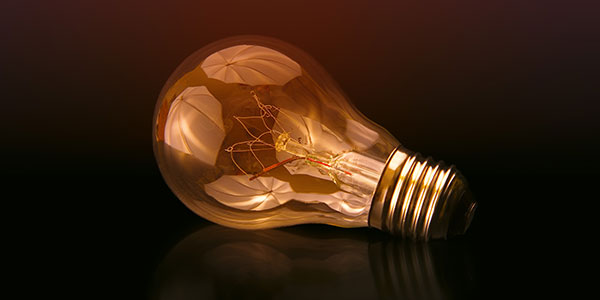What's The Job Market For Dual Boiler Espresso Machines Professionals?
본문
Understanding Dual Boiler Espresso Machines: A Comprehensive Guide
Espresso is an art as much as it is a science. For coffee enthusiasts and baristas alike, attaining the best shot of espresso requires precision and control over brewing variables. Among the most efficient ways to accomplish this precision is through using dual boiler espresso machines. This article dives into the functionality, benefits, and factors to consider of dual boiler espresso machines for both novices and knowledgeable coffee aficionados.
What is a Dual Boiler Espresso Machine?
A dual boiler espresso machine features 2 separate boilers: one for brewing espresso and the other for steaming milk. This design permits the user to brew coffee and steam milk at the same time, attaining optimal temperature level control for both procedures. This is essential for developing lattes, coffees, and macchiatos, where both components are vital.
Table 1: Key Components of Dual Boiler Espresso Machines
| Element | Function |
|---|---|
| Espresso Boiler | Heats water to the ideal brewing temperature level (around 190 ° F) |
| . Steam Boiler | Heats water to a greater temperature level (around 250 ° F) for steaming milk. |
| PID Controller | Manages the temperature of the boilers for precision developing. |
| Group Head | Where the coffee premises sit and warm water passes through. |
| Steam Wand | Provides steam to froth milk. |
Advantages of Dual Boiler Espresso Machines
1. Synchronised Brewing and Steaming
The most significant advantage of dual boiler espresso machines is the ability to brew espresso and steam milk at the very same time. This efficiency is especially beneficial in busy environments, such as cafes, where speed and quality are critical.
2. Consistent Temperature Control
Dual boiler machines frequently feature advanced PID (Proportional Integral Derivative) controllers that preserve a consistent temperature level throughout the brewing process. Consistency is important in espresso making to ensure the best extraction, hence enhancing taste and aroma.

3. Personalization and Versatility
With 2 separate boilers, users can customize the temperature settings for both espresso developing and milk steaming. This implies different types of coffee, such as lighter or darker roasts, can be prepared completely to match specific taste profiles.
4. Ideal for Advanced Techniques
For those thinking about latte art or other innovative techniques, a dual boiler espresso machine offers the flexibility to deal with different milk textures while likewise drawing out espresso. This flexibility makes it an attractive choice for baristas who wish to refine their skills.
5. Durability and Durability
Many dual boiler machines are built with high-quality materials designed for durability. They are typically made of stainless-steel and function long lasting elements, making them a beneficial investment for anyone serious about coffee.
Disadvantages of Dual Boiler Espresso Machines
Despite their numerous advantages, dual boiler machines can have some drawbacks:
- Higher Cost: Dual boiler machines tend to be pricier than their single-boiler counterparts, which might not be appropriate for casual coffee drinkers.
- Size and Space: These machines may occupy more countertop area than others, making them less ideal for small kitchens.
Table 2: Key Considerations When Choosing a Dual Boiler Espresso Machine
| Consideration | Explanation |
|---|---|
| Budget | Dual boiler machines can vary from ₤ 1,000 to over ₤ 4,000. |
| Size | Inspect your kitchen area area before purchasing. |
| Brand Reputation | Look for well-reviewed brand names with great client assistance. |
| Features | Consider what functions are important (e.g., PID controller, volumetric choices). |
| Maintenance | Some machines might require more routine upkeep than others. |
Frequently asked questions
1. Are dual boiler espresso machines worth the investment?
Yes, they deserve the financial investment for serious coffee lovers or professional baristas who value precision in espresso extraction and milk steaming.
2. How do I keep a dual boiler espresso machine?
Regular upkeep consists of descaling the machine, cleaning up the group head, and guaranteeing that the steam wand is without milk residue. Consult the manufacturer's manual for particular guidelines.
3. Can I use a dual boiler espresso machine for other developing approaches?
Generally, dual boiler machines are designed primarily for espresso. However, they can normally brew quality drip coffee and other designs with the right settings and modifications.
4. What brands are known for their dual boiler machines?
Some reputable brand names consist of La Spaziale, Breville, and ECM. Each brand has its own unique features and pricing.

5. What is the average lifespan of a dual boiler espresso machine?
With correct care and upkeep, a dual boiler machine can last over a decade, making it a long-lasting investment for coffee lovers.
Dual boiler espresso machines represent the peak of espresso-making innovation, combining art and science into one compact gadget. While they require a greater initial financial investment and more countertop space, the advantages they provide-- such as synchronised brewing and steaming, precise temperature level control, and toughness-- make them ideal for severe coffee enthusiasts. Understanding the workings, advantages, and factors to consider for these machines will make it possible for consumers to make educated decisions and elevate their coffee brewing experience. Whether at home or in a busy café, a dual boiler machine can genuinely improve the art of espresso.


댓글목록 0